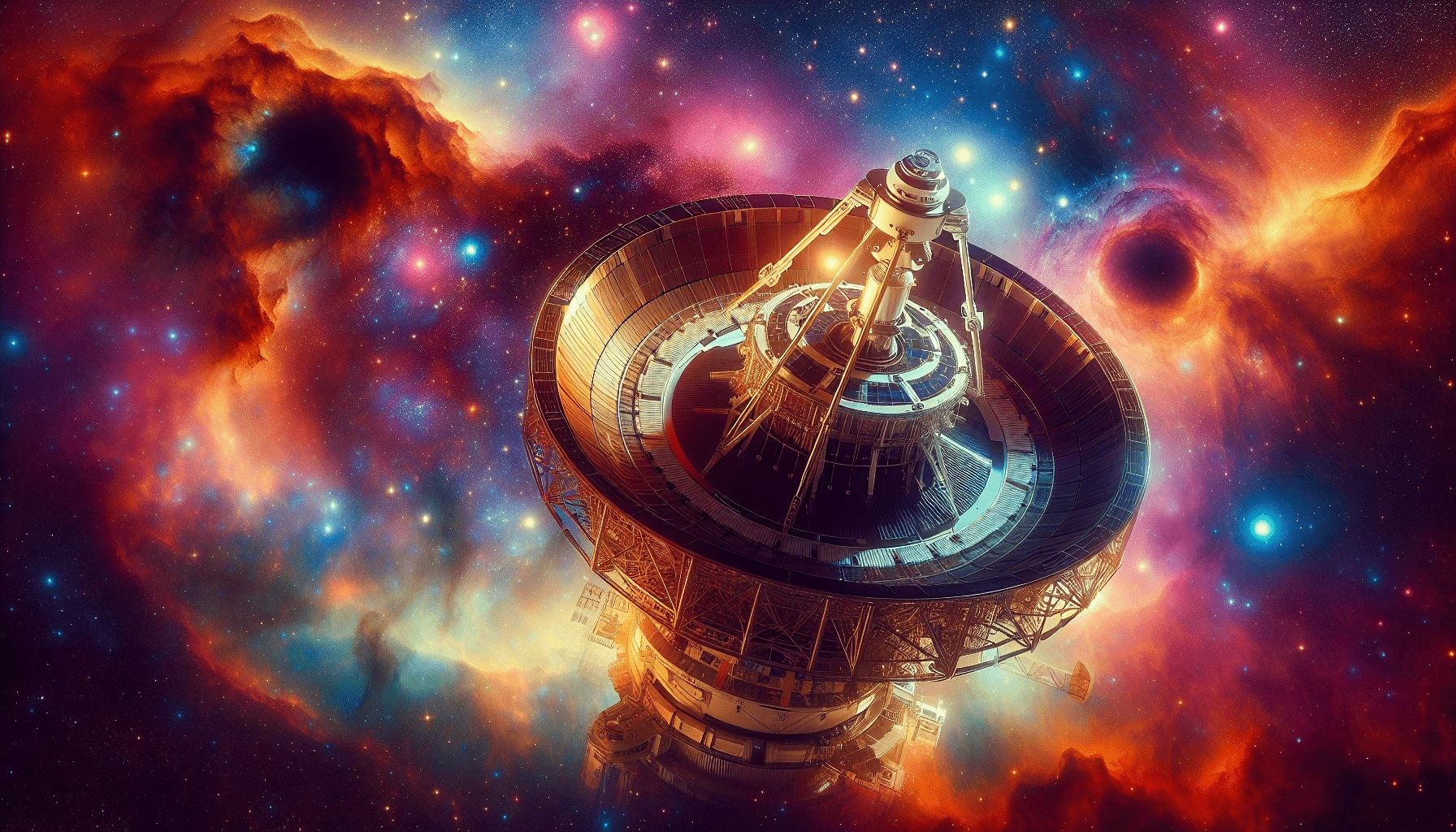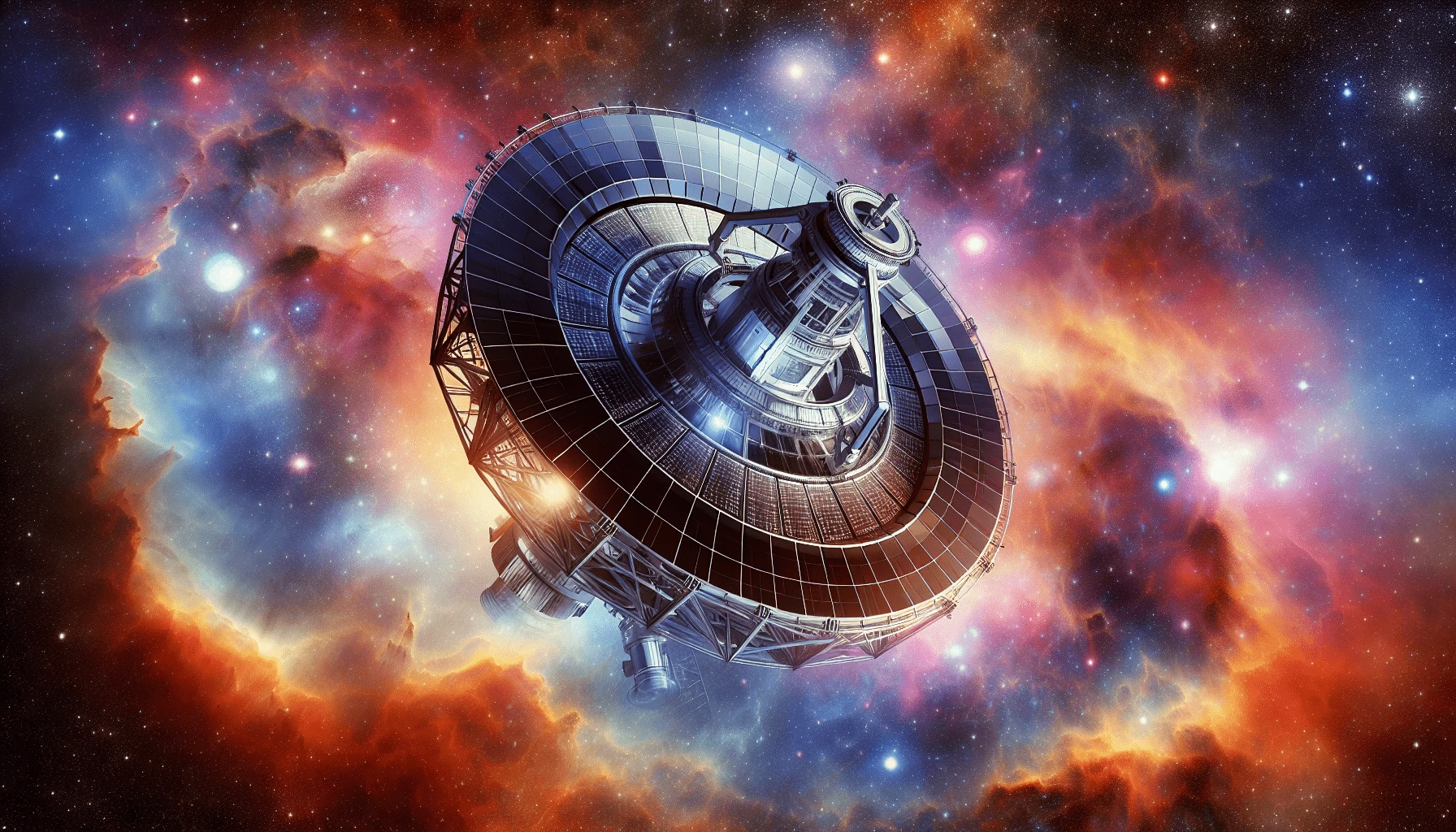Have you ever pondered how we manage to glimpse the farthest corners of our universe? Space telescopes play a pivotal role in this incredible feat. By serving as our windows to the cosmos’ hidden realms, these instruments have offered us extraordinary insights into the universe’s mysteries and phenomena.

Table of Contents
Origins and Development of Space Telescopes
Understanding the story of space telescopes is crucial for grasping their significance today. Historically, the quest to observe the universe began with ground-based telescopes. However, Earth’s atmosphere, with its clouds, light pollution, and constant motion, limited their effectiveness. The thought of placing telescopes beyond these hindrances was first conceived in the mid-20th century, leading to the revolutionary idea of space telescopes.
Historical Milestones
In the 1960s, the concept of space telescopes materialized with projects like NASA’s Orbiting Astronomical Observatory. Fast forward to 1990, the launch of the Hubble Space Telescope marked a turning point. Equipped with advanced optics, Hubble has captured some of the most iconic images of space, revealing details of galaxies, nebulae, and supernovae, transforming our understanding of the universe.
The Motivation for Space Exploration
Driven by a need to look deeper into space without atmospheric distortion, space telescopes were created to surpass the limitations of terrestrial observation. With no atmospheric interference, space telescopes can provide clearer and more precise images, leading to discoveries about our universe that were once deemed impossible.
A Legacy of Discovery
Space telescopes have contributed more to our understanding of the universe than one might imagine. The Hubble Space Telescope alone has generated over a million observations, contributing to thousands of scientific papers. Beyond Hubble, other telescopes like Chandra X-ray Observatory, Spitzer Space Telescope, and the James Webb Space Telescope (JWST) each bring unique capabilities.
Key Concepts and Technologies
To appreciate the functionality of space telescopes, it is essential to understand the underlying mechanics and technologies. The principles and innovations powering these telescopes allow us to explore the universe in unprecedented ways.
Types and Functions
Space telescopes come in various designs to suit different purposes, including optical telescopes like the Hubble, using mirrors to capture visible light, and infrared telescopes like the Spitzer, which detect heat signals and study objects like forming stars dust-shrouded in stellar nurseries.
Adaptive Optics and Spectroscopy
Adaptive optics and spectroscopy are two of the primary technologies that enhance the capabilities of space telescopes. Adaptive optics helps correct distortions in images, while spectroscopy allows astronomers to analyze objects’ compositions by studying the light spectra they emit.
The Role of Data
Massive amounts of data collected by space telescopes require sophisticated processing to yield meaningful results. These data sets are essential for developing an understanding of cosmic phenomena, feeding global collaboration amongst scientists, and driving the discoveries that shape our knowledge.

The Impact of Space Telescopes on Scientific Discovery
Space telescopes hold enormous influence over our capacity to investigate and comprehend the universe. The extent of their impact is observed through the numerous scientific breakthroughs and innovations they have facilitated.
Unveiling Cosmic Phenomena
Space telescopes have significantly opened up our understanding of cosmic phenomena, from the birth and death of stars to the mysterious dark matter and dark energy that dominate the universe. Observations made by space telescopes have redefined our cosmic exploration’s scope, painting a more intricate picture of the universe’s dynamics.
In Search of Exoplanets
One of the most compelling contributions of space telescopes has been the discovery of exoplanets—planets outside our solar system. With devices like the Kepler Space Telescope, scientists have identified thousands of these celestial bodies, some potentially harboring the conditions necessary for life.
Probing the Universe’s Age
Space telescopes have confirmed predictions about the age and expansion of the universe. By observing distant supernovae and cosmic microwave backgrounds, astronomers estimate the universe’s age to be about 13.8 billion years, adding clarity to our historical understanding of cosmic evolution.
Challenges in Space Telescope Deployment
While space telescopes have immensely benefited our explorations, deploying and operating them involve numerous challenges that need addressing.
Technical Hurdles
Crafting a space telescope is an engineering marvel facing complex technical challenges. The meticulous development of technologies such as lightweight mirrors, thermal management, and communication systems is critical to the success of any mission.
Logistical Constraints
Launching a space telescope is no small feat, necessitating precise calculations and logistics. From the immense costs involved to the precise integration into spacecraft, every aspect must be flawless to ensure the telescope’s successful deployment and operation.
Post-Deployment Difficulties
Once in orbit, space telescopes face unique issues such as micrometeoroid damage, radiation, and the unpredictability of outer space. Innovations such as remote repair missions (famously executed on Hubble) highlight creative solutions to these problems.

Case Studies: Landmark Space Telescopes
Studying the specific space telescopes and their missions provides insight into the profound impact these instruments have had on astronomy and science.
Hubble Space Telescope
Undoubtedly the most renowned, Hubble has offered unrivaled contributions to astronomy since its deployment. Its images have inspired the public imagination, capturing breathtaking views of cosmic entities and transforming our understanding of phenomena like black holes, quasars, and star formation.
James Webb Space Telescope
The James Webb Space Telescope, as Hubble’s successor, brings next-generation technology to space observation. With its focus on the infrared spectrum, it promises to explore the early universe’s mysteries, glimpse the first galaxies, and improve our understanding of the formation of stars and planets.
Chandra X-ray Observatory
Specializing in detecting X-rays emitted by high-energy cosmic objects, the Chandra X-ray Observatory has been pivotal in studying black holes, neutron stars, and hot gas in galaxy clusters, offering insights no other telescope can provide.
The Future and Trends of Space Telescopes
As science and technology advance, so do the possibilities for future space telescopes, each with the potential to redefine our cosmic comprehension.
Novel Technologies
Emerging technologies—such as segmented deployable mirrors, improved adaptive optics, and quantum sensors—are poised to revolutionize the development and functionality of future telescopes, paving the way for further cosmic discoveries.
Collaborative Astronomy
Global collaborations and interdisciplinary partnerships are fundamental to future space telescopes. By pooling resources, expertise, and knowledge, international projects exemplify a trend toward cooperative efforts in astronomical exploration.
Broader Implications for Humanity
Beyond scientific progress, space telescopes reflect humanity’s curiosity about the universe. They symbolize our enduring desire to explore, understand, and push the boundaries of what we know, inspiring both awe and inspiration across generations.

Conclusion
In summary, space telescopes are more than just scientific instruments; they are gateways to the universe’s hidden realms. Through their lenses, we glimpse distant galaxies, witness stellar wonders, and ponder cosmic questions. As technological advances propel us further, your engagement with the knowledge they provide will be vital. What challenges do you foresee in the ongoing journey into the cosmos? Consider exploring further articles on emerging space technologies and future astronomical missions to expand your cosmic horizon.
Further Reading
- “The Hubble Space Telescope: Discoveries and Legacies”
- “James Webb Space Telescope: Expectations and Technologies”
- “Understanding the Universe: A Guide to Space Telescopes”
These resources offer a deeper delve into various aspects of space telescope missions and innovations, giving you more context about the challenges and triumphs of these monumental efforts.

NASA Telescope Named For ‘Mother of Hubble’ Nancy Grace Roman

